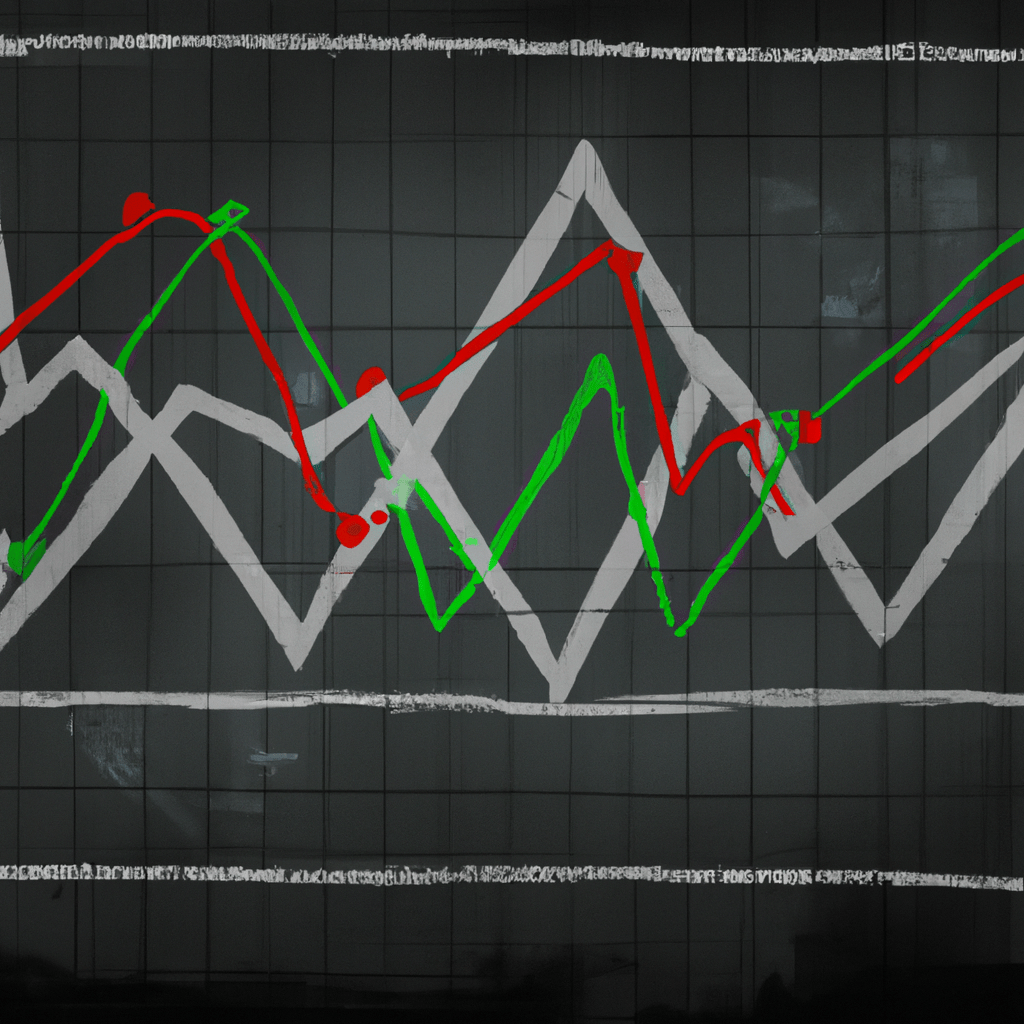This article explores different types of forex signals, including manual, automated, free, and paid signals. It also discusses technical indicators used in forex signal strategies and the importance of fundamental analysis in generating forex signals. By using these signals, traders can improve decision-making and increase success in the forex market.
Forex trading can be a complex and challenging endeavor, especially for beginners. With an overwhelming amount of information and strategies available, it can be difficult to know where to start. One crucial tool that traders rely on to make informed decisions is forex signals. Forex signals are indicators or suggestions that help traders identify potential trading opportunities in the foreign exchange market. In this article, we will explore the different types of forex signals, how they are used, and the strategies behind them. From understanding the basics to analyzing technical indicators and exploring fundamental analysis, we will delve into the various aspects of forex signals to equip you with the knowledge to navigate the forex market successfully.
1. Understanding the Basics: Exploring Different Types of Forex Signals

Understanding the Basics: Exploring Different Types of Forex Signals
Forex signals play a crucial role in the world of currency trading. These signals are essentially indicators that assist traders in making informed decisions about buying or selling currency pairs. By analyzing market trends and patterns, forex signals provide valuable insights into potential profit-making opportunities. In this section, we will delve into the various types of forex signals and their significance in the trading world.
1. Manual Forex Signals:
Manual forex signals are generated by experienced traders or analysts who closely monitor the market and identify potential trading opportunities. These signals are typically communicated through various means, such as email, SMS, or even social media platforms. Traders who utilize manual forex signals receive real-time updates and can make their trading decisions based on the insights provided by the signal provider. Manual signals are often preferred by those who value human expertise and want to have more control over their trading decisions.
2. Automated Forex Signals:
As the name suggests, automated forex signals are generated by computer algorithms or trading robots. These algorithms are designed to analyze market data, identify patterns, and generate signals based on predetermined criteria. Automated signals eliminate the need for human intervention and can be sent to traders automatically. This type of signal is popular among traders who prefer a systematic and emotion-free approach to trading.
3. Free Forex Signals:
Free forex signals are widely available on various online platforms. These signals are typically generated by individual traders or signal providers who offer their insights without charging a fee. While free signals can be a good starting point for novice traders, it is important to exercise caution and verify the credibility and reliability of the signal provider. Free signals may lack the same level of accuracy and reliability as paid signals, so traders should always conduct their own research and analysis before making any trading decisions based on free signals.
4. Paid Forex Signals:
Paid forex signals are generated by professional traders or signal providers who charge a fee for their services. These signals are often considered to be more reliable and accurate, as they are backed by extensive research and analysis. Paid signal providers usually have a track record of successful trades, which can be verified by potential subscribers. While paid signals come at a cost, they can be a worthwhile investment for traders who value high-quality insights and are looking to enhance their trading performance.
In conclusion, understanding the different types of forex signals is essential for any trader looking to navigate the complex world of currency trading. Whether one opts for manual, automated, free, or paid signals, it is crucial to conduct thorough research and choose reliable signal providers. By utilizing forex signals effectively, traders can improve their decision-making process and increase their chances of success in the dynamic forex market.
2. Analyzing Technical Indicators: A Closer Look at Forex Signal Strategies

Analyzing Technical Indicators: A Closer Look at Forex Signal Strategies
Technical analysis is an important aspect of forex trading, as it helps traders make informed decisions based on historical price data. Forex signal strategies heavily rely on analyzing technical indicators to identify potential entry and exit points in the market. In this section, we will delve deeper into the various technical indicators used in forex signal strategies.
1. Moving Averages: Moving averages are widely used indicators that smooth out price data over a specific period. They help identify trends by showing the average price of a currency pair over a certain time frame. Traders often use the crossover of different moving averages, such as the 50-day and 200-day moving averages, to generate buy or sell signals.
2. Relative Strength Index (RSI): The RSI is a momentum oscillator that measures the speed and change of price movements. It oscillates between 0 and 100 and is used to identify overbought and oversold levels in the market. Traders consider readings above 70 as overbought, indicating a potential reversal or correction, while readings below 30 suggest oversold conditions and a potential buying opportunity.
3. Bollinger Bands: Bollinger Bands consist of a moving average (typically the 20-day simple moving average) and two standard deviation lines above and below it. These bands dynamically adjust based on market volatility. When the price touches the upper band, it may indicate overbought conditions, while touching the lower band may indicate oversold conditions. Traders often use Bollinger Bands to identify potential breakouts or reversals.
4. MACD (Moving Average Convergence Divergence): The MACD is a popular trend-following momentum indicator that helps identify potential trend reversals, bullish or bearish market conditions, and generate buy or sell signals. It consists of two lines: the MACD line and the signal line. When the MACD line crosses above the signal line, it generates a bullish signal, and when it crosses below, it generates a bearish signal.
5. Fibonacci Retracement: Fibonacci retracement levels are based on the Fibonacci sequence and are used to identify potential support and resistance levels in the market. Traders draw retracement levels from swing highs to lows or vice versa. These levels, such as 38.2%, 50%, and 61.8%, are considered crucial areas where price may reverse or continue its trend.
6. Stochastic Oscillator: The stochastic oscillator is a momentum indicator that compares the closing price of a currency pair to its price range over a specific period. It oscillates between 0 and 100 and is used to identify overbought and oversold conditions. Readings above 80 indicate overbought conditions, while readings below 20 indicate oversold conditions.
These are just a few examples of the technical indicators used in forex signal strategies. Traders often combine multiple indicators to gain a more comprehensive view of the market and increase the accuracy of their trading signals. It is important to note that no single indicator guarantees success in forex trading, and traders should always use these signals in conjunction with other analysis techniques and risk management strategies.
3. Exploring Fundamental Analysis: Unveiling Forex Signal Types Based on Economic Factors

Fundamental analysis is a crucial aspect of forex trading that involves analyzing economic, social, and political factors that can influence currency prices. This type of analysis helps traders understand the underlying forces driving the market and make informed trading decisions. When it comes to forex signals, fundamental analysis plays a significant role in determining the types of signals that can be generated based on economic factors.
One type of forex signal that is based on fundamental analysis is the interest rate signal. Central banks around the world use interest rates as a tool to control inflation and stimulate economic growth. Changes in interest rates can have a profound impact on a country's currency value. For instance, when a central bank raises interest rates, it attracts foreign investors seeking higher returns, which can result in a stronger currency. On the other hand, lowering interest rates can lead to a weaker currency. Forex signals based on interest rates provide traders with insights into potential currency movements based on central bank actions.
Another type of forex signal based on fundamental analysis is the economic data signal. Economic indicators, such as gross domestic product (GDP), inflation rates, employment data, and consumer confidence, provide valuable information about a country's economic health. Positive economic data can lead to increased investor confidence and a stronger currency, while negative data can have the opposite effect. By monitoring economic data releases and analyzing their impact on currency prices, traders can generate forex signals based on the expected market reactions.
Political events and geopolitical factors also play a significant role in forex signal generation. Political stability, government policies, trade agreements, and international conflicts can all influence currency prices. For example, a country undergoing political turmoil may experience a decline in its currency value due to increased uncertainty and risk. Forex signals based on political events can help traders anticipate potential currency movements and adjust their trading strategies accordingly.
In conclusion, fundamental analysis is a vital tool for generating forex signals based on economic factors. Interest rate signals, economic data signals, and political event signals are some of the types of signals that can be derived from fundamental analysis. By incorporating these signals into their trading strategies, forex traders can enhance their decision-making process and increase their chances of success in the dynamic forex market.
In conclusion, understanding the different types of forex signals is crucial for any trader looking to navigate the foreign exchange market successfully. The basics of forex signals provide a foundation for traders to explore the various strategies and indicators used to analyze market trends and make informed decisions. Technical indicators offer a closer look into price movements and patterns, while fundamental analysis unveils forex signals based on economic factors. By incorporating these different types of forex signals into their trading strategies, traders can increase their chances of making profitable trades and achieving their financial goals. It is essential for traders to continually educate themselves and stay updated on the latest developments in the forex market to stay ahead of the game and make the most informed decisions possible.





